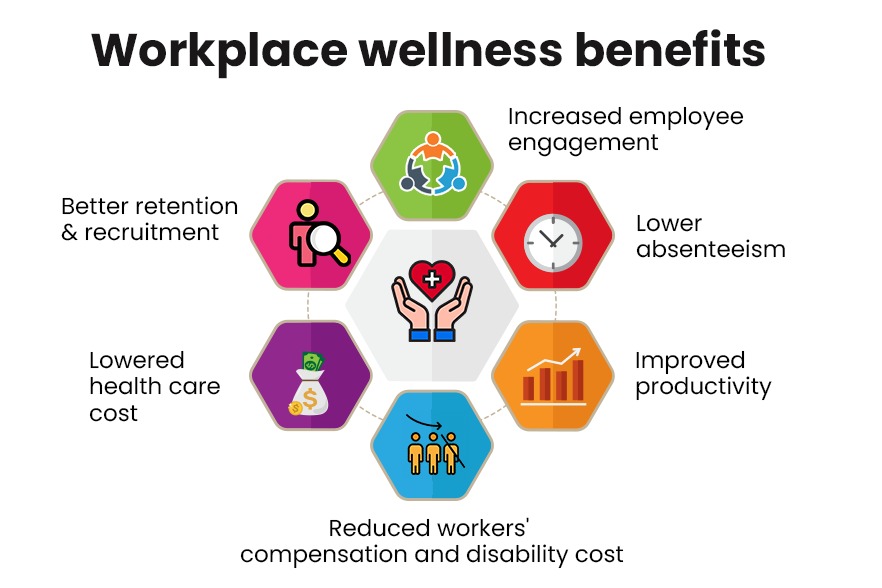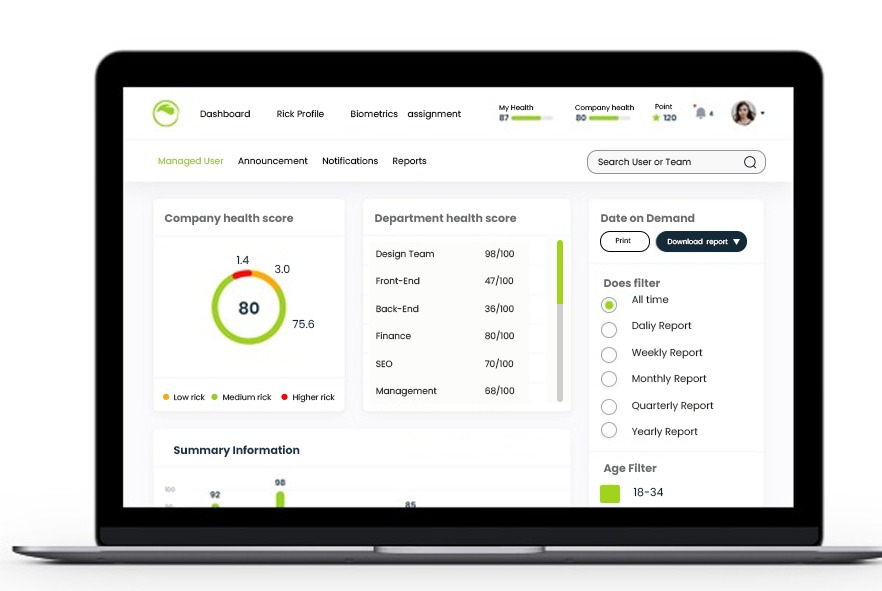
The pandemic has also exacerbated mental health issues, leading to employee burnout and low morale. One report states that 30% of short-term and long-term disability claims in Canada were due to mental health issues.
Well-structured employee wellness programs can help companies take a proactive approach and save on costs in the long-term. They can improve productivity, boost morale and significantly reduce attrition. Data analytics can hold the key to developing personalized and effective employee wellness programs.
In the US alone, poor employee health costs businesses up to $530 billion annually as a result of low employee productivity and higher payouts for employee health benefits.
Here’s how employee wellness solutions are integrating data science algorithms to improve outcomes in your organization.
Analyzing data can help you understand current employee health trends
Before devising a new employee wellness program, it’s important to understand where most of your employee health costs are currently going. Data science algorithms can help identify commonly recurring health issues and the most prevalent health risks among employees.
For instance, you might discover that a significant portion of employees has health risks like obesity or excessive alcohol consumption. In this case, you might include employee fitness programs or programs to encourage moderate consumption of alcohol.
There are numerous sources of data that can help you gain these insights. Many organizations conduct an annual employee health checkup that can help identify underlying conditions and risk factors. Self-reported employee surveys are another great source of information. These surveys can also get employees more involved in their own health as they can include questions on what employees want to be included in the wellness programs. While sourcing this data, however, it’s important that employers protect the identity of its employees. Many countries have regulations limiting how much personal health information employers can access. Ensuring that all data and responses are anonymized can help avoid potential regulatory challenges.
Also read: SaaS vs Custom Based Solutions – The Pros and Cons
Using a data-driven approach to improve employee engagement
Employee engagement is crucial to the success of wellness programs. Even the most carefully crafted programs cannot work if employees themselves do not make use of the tools provided to them. Analyzing data around an employee’s wellness goals and preferences can help tailor reminders and notifications sent to them. This can resonate better with an employee and motivate them to actually follow the wellness programs. For instance, employees who have concerns about being over a healthy weight can be encouraged with timely reminders to move around or take a walk.
Data science algorithms also help companies understand where to engage with employees. For instance, they might see higher engagement over push notifications than over email reminders. This can tailor the communication strategy so that programs see better results.

Building a consolidated employee health platform
One popular way to manage data is by building a consolidated platform for employees’ wellness needs. This platform not only stores details about the wellness programs but includes personalized profiles for each employee. It can track their calories burnt, measure progress against wellness goals and include helpful resources like blogs. The platform can also include their health insurance policy details so employees can submit claims through the app. This approach puts control of an employee’s health back in their own hands. The wellness plans can facilitate healthy living, but ultimately employees are in charge of their own health outcomes.
One Stop Wellness, for example, is an employee wellness platform developed by iTech to promote employee engagement. The platform uses data science algorithms to monitor individual health risks for each employee and provide them with notifications and health plans tailored to their needs. Employees can access a range of fitness classes, take self-assessment tests and earn rewards each time they meet their health goals.

Measuring the success of wellness programs with data
Once a wellness program is launched, it is essential to keep monitoring progress to evaluate how effective it is. The normal sequence to put in place is
- The initial employee health data gathered before the launch of the program can serve as a baseline.
- Ideally, there should be progress against the initial program objectives. For example, if weight was a major risk factor at the start of the program, does the data indicate that employees are becoming more active, increasing their daily steps or signing up for gym memberships?
- Another way to measure outcomes is to analyze the number of health benefits claims made and sick leaves taken over a period and compare it to a similar period before the launch of the wellness program. If wellness programs make for healthier employees, then naturally there should be fewer health insurance claims and fewer sick leaves.
- This data can help you calculate ROI, i.e., the amount spent on wellness programs vs the amount saved on health insurance claims, productivity losses, etc.
If you don’t see any positive trends within the first few months, don’t be disheartened. Lifestyle changes can take years to come into effect and therefore, employee wellness programs require a long-term view. The focus should be on seeing gradual incremental changes rather than a complete overhaul in employees’ health profiles.
Fostering a culture of health and wellness within an organization can have a real impact on the growth of an organization. In addition to measuring the monetary returns, companies should also measure the qualitative benefits of wellness programs. These programs when successful can contribute to better mental health and as a result, higher growth for a company and lower attrition. Taking a holistic view of company data can present a 360-degree view of the success of employee wellness programs.



